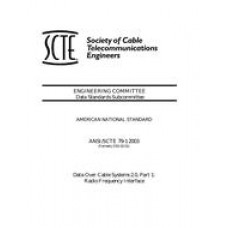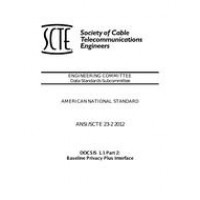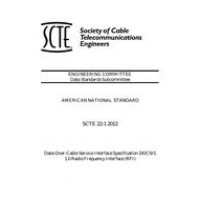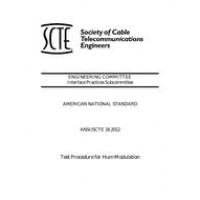SCTE 79-1 2003
- DOCS 2.0 Part 1: Radio Frequency Interface, (formerly DSS 02-01)
- standard by Society of Cable Telecommunication Engineers, 01/01/
- Category: SCTE
$50.00
$25.00
There are differences in the cable spectrum planning practices adopted for different networks in the world. Therefore threeoptions for physical layer technology are defined, which have equal priority and are not required to be interoperable. Onetechnology option is based on the downstream multi-programme television distribution that is deployed using 6 MHzchannelling, and supports upstream transmission in the 5-42 MHz region. The second technology option is based on amulti-programme television distribution using 8MHz channel spacing and supports upstream in the 5-65 MHz region. Thethird technology option is based on 6MHz channel spacing and supports upstream in the 10-55 MHz region.. The first ofthese options is defined in Sections 4, 6, and 7, whereas the second is defined by replacing the content of those sections withthe content of Annex F. Compliance with this document requires compliance with only one of these implementations. Allthree technology options are defined in [ITU-T J.122]. It is not required that equipment built to one option shall interoperatewith equipment built to another.
These optional physical-layer technologies allow operators some flexibility within any frequency planning, EMC and safetyrequirements that are mandated for their area of operation. For example, the 6 MHz downstream-based option defined bySections 4, 6, and 7 might be deployable within an 8 MHz channel plan.
 PDF
PDF
All of our standards document are available in PDF (Portable Document Format), an electronic, downloadable format.You will be able to download the file in your account downloads.
 Multi-User Access
Multi-User Access
After purchasing, you have the ability to assign each license to a specific user.
 Printable
Printable
At any time, you are permitted to make printed copies for your and your members' reference use.





